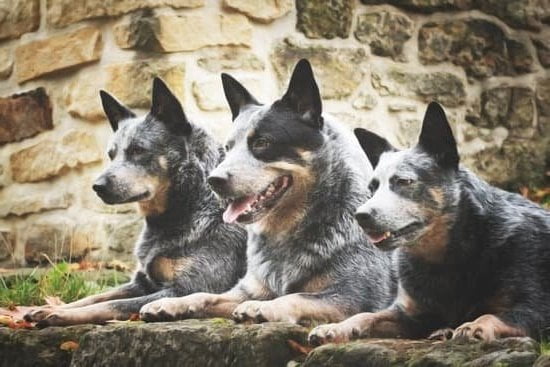Are you struggling with getting your dog to come back to you when called? If so, you’re not alone. In this article, we will explore how to train your dog to recall on command.
Having a reliable recall command is essential for any dog owner, as it ensures the safety and well-being of your furry companion in various situations. Whether you’re at the park, beach, or simply playing in your backyard, a strong recall command can give you peace of mind and keep your dog out of harm’s way.
Before delving into the training techniques, it’s crucial to understand why dogs often struggle with recalling. By gaining insight into their psychology and behavior, you can tailor your training approach to effectively communicate with your dog and achieve successful results. Additionally, we will discuss the importance of establishing a strong bond and trust with your dog as the foundation for effective recall training.
Furthermore, we’ll cover both basic and advanced recall training methods, from teaching your dog to come on command in a controlled environment to transitioning to off-leash recalls and distraction training. We’ll also address common mistakes to avoid and provide troubleshooting tips for overcoming challenges that may arise during the training process.
Lastly, we will emphasize the key factors of consistency and patience in mastering dog recall training while providing tips on maintaining a reliable recall over time. Whether you’re a first-time pet owner or looking to improve your current training methods, this article will equip you with the knowledge and tools needed for successful recall training with your canine companion.
Understanding Dog Psychology
Dog’s Natural Instincts
Dogs, by nature, are curious and independent animals. Their instinctual behaviors may often conflict with our desires for them to come when called. Understanding this natural tendency is crucial in effectively training a dog to recall.
Prey Drive and Distractions
One of the primary reasons why dogs struggle with recalling is their prey drive. When dogs catch a scent or see something that triggers their predatory instincts, it can be challenging for them to focus on responding to a recall command. Additionally, distractions in the environment such as other animals, loud noises, or unfamiliar scents can also hinder a dog’s ability to recall.
Past Experiences and Trauma
Another factor that can contribute to a dog’s struggle with recalling is past experiences or trauma. Dogs that have had negative experiences in certain environments or have been punished for returning when called may be more hesitant to do so in the future. This fear or anxiety can make it difficult for them to respond consistently to recall commands.
Understanding these psychological factors is essential in developing effective strategies for recall training that take into account a dog’s natural instincts and behaviors. By recognizing the challenges that dogs face when it comes to recalling, trainers can tailor their approach to address these obstacles and ultimately improve their dog’s responsiveness to recall commands.
Setting the Foundation
Establishing a strong bond and trust with your dog is crucial for successful recall training. Without a strong foundation, it can be difficult to achieve a reliable recall command. Here are some key steps to help you build that essential bond with your furry companion:
- Spend Quality Time Together: Quality time is essential for building a strong relationship with your dog. Engage in activities that your dog enjoys, such as playtime, walks, and training sessions. This will not only strengthen your bond but also create positive associations with you.
- Positive Reinforcement: Use positive reinforcement techniques to reward good behavior and create a positive association with obeying commands. Whether it’s treats, praise, or toys, rewarding your dog for following the recall command will reinforce the behavior and strengthen the bond between you.
- Communication: Understanding how dogs communicate is vital in building trust. Learn to read your dog’s body language and signals to better understand their needs and feelings. This will help establish clear communication and trust between you and your canine companion.
By setting the foundation of a strong bond and trust with your dog, you are creating the groundwork for successful recall training. When your dog feels secure in the relationship and trusts your leadership, they will be more likely to respond reliably to the recall command both on – and off-leash.
Remember that every dog is unique, so be patient and understanding as you work on developing this essential connection with your furry friend. Building a strong foundation takes time and effort, but the results will be well worth it in achieving a reliable recall command.
Basic Recall Training
Basic recall training is an essential aspect of obedience training for your dog. Teaching your dog to come when called can be a life-saving command, especially in situations where their safety could be at risk. In this phase of recall training, the focus is on instilling the behavior of responding promptly to the “come” command in a controlled environment.
One effective method for teaching recall to your dog is through positive reinforcement. By using rewards such as treats, praise, or playtime, you can encourage your dog to associate coming when called with a positive experience. Start training in a quiet and familiar environment free from distractions. Use a long leash to gently guide your dog towards you while giving the “come” command. When they respond and come to you, reward them immediately with praise and treats.
Consistency is key during this stage of training. Be sure to use the same verbal cue each time you call your dog, and avoid using it for anything other than recall. It’s also important to keep training sessions short and enjoyable for your dog to maintain their interest and enthusiasm.
| Training Tip | Description |
|---|---|
| Positive Reinforcement | Use rewards like treats, praise, or playtime to encourage your dog’s prompt response. |
| Consistency | Use the same verbal cue for recall and keep training sessions short and enjoyable. |
| Controlled Environment | Start training in a quiet place with minimal distractions. |
Advanced Recall Training
Once your dog has mastered the basic recall command in a controlled environment, it’s time to progress to advanced recall training. This involves transitioning to off-leash recalls and introducing distractions that mimic real-world scenarios. Off-leash recalls are crucial for ensuring that your dog can reliably come when called, even when not restrained by a leash.
To begin off-leash recalls, start in a familiar and secure area such as a fenced backyard or an enclosed space. Begin by practicing the recall command without the leash, but be prepared to gently guide or redirect your dog back to you if they do not respond appropriately. Use high-value treats or rewards to reinforce the behavior of coming when called.
As your dog becomes more proficient with off-leash recalls in controlled environments, gradually introduce distractions. This could include other people, other dogs, toys, food, or any other enticing stimuli. The goal is to teach your dog to prioritize the recall command over distractions, regardless of the environment.
It’s important to remember that advanced recall training takes time and patience. Some dogs may require more practice than others before they can reliably respond to the recall command in various situations. Consistent training sessions and positive reinforcement are key to achieving success in transitioning to off-leash recalls and distraction training.
| Recall Training Stage | Description |
|---|---|
| Off-Leash | Transition from using a leash for recalls to allowing your dog off-leash in a secure area. |
| Distraction Training | Introduce various distractions such as other people, dogs, toys, and food while practicing the recall command. |
| Persistence | Consistent training sessions and positive reinforcement are essential for progress in advanced recall training. |
Common Mistakes to Avoid
When training your dog to recall, there are common mistakes that dog owners make that can derail the progress of recall training. Understanding these pitfalls and knowing how to overcome them is crucial in establishing a reliable recall command in your dog. Here are some common mistakes to avoid and how to address them:
- Lack of Consistency: One of the most common mistakes in recall training is inconsistency in the use of the recall command. If you only call your dog when you need to leave the park or when they misbehave, they will associate coming when called with negative experiences.
To overcome this, always use positive reinforcement and rewards when your dog successfully recalls, and avoid using the command in situations that could result in a negative experience for your pet. - Using the Recall Command as Punishment: It’s important to never use the recall command as a form of punishment. If you call your dog to come to you when they have done something wrong, they will begin to associate coming when called with negative consequences. This can significantly impact their willingness to respond to the recall command in the future.
- Failing to Consider Distractions: Another mistake is practicing recall training in a controlled environment without gradually introducing distractions. Dogs need to learn how to respond to the recall command even amidst distractions such as other animals, interesting scents, or loud noises. Failing to train for off-leash recalls under various conditions can result in an unreliable response from your dog.
Avoiding these common pitfalls and taking proactive steps towards overcoming them will greatly improve the effectiveness of your dog’s recall training. By being consistent with positive reinforcement, avoiding using the command as punishment, and gradually introducing distractions into training sessions, you can set your dog up for success in mastering their recall command.
Troubleshooting
Identifying Distractions
One common challenge in recall training is dealing with distractions. Dogs are easily enticed by sights, sounds, and smells, making it difficult for them to focus on recalling when there are other stimuli present. To address this challenge, it’s important to gradually introduce distractions during training sessions.
Start with minimal distractions and gradually increase the level as your dog becomes more proficient at recalling. This will help your dog learn to focus on your command despite the presence of distractions.
Reinforcing Positive Behavior
Another issue that dog owners may encounter during recall training is reinforcing positive behavior effectively. It’s crucial to reward your dog immediately and consistently when they respond to the recall command. This reinforcement can be in the form of treats, praise, or playtime, depending on what motivates your dog. By ensuring that your dog associates coming when called with positive outcomes, you can enhance their willingness to respond to the recall command in various situations.
Dealing With Fear or Anxiety
Some dogs may struggle with recalling due to fear or anxiety issues. It’s important to consider your dog’s emotional state during training sessions and create a safe and supportive environment for learning.
If your dog shows signs of fear or anxiety during recall training, it’s best to consult a professional trainer or behaviorist for guidance. They can provide specialized techniques and strategies to address these underlying issues and help your dog become more confident and comfortable with recalling in different scenarios.
Consistency and Patience
Patience is another key factor in mastering dog recall training. It’s important to remember that dogs don’t understand human language the way we do, so it may take time for them to fully grasp the concept of recalling.
Additionally, all dogs learn at their own pace, so it’s crucial for pet owners to remain patient throughout the process. Losing patience or becoming frustrated during training sessions can actually hinder your progress and make it more difficult for your dog to learn.
Consistency and patience go hand-in-hand in terms of reinforcing your dog’s recall training. Even after your dog has mastered the recall command in controlled environments, it’s crucial to continue practicing regularly in various situations and environments.
This ongoing reinforcement will help solidify the training and ensure that your dog consistently responds when called, regardless of any distractions or temptations present. Ultimately, by maintaining consistency and patience in your approach to recall training, you can achieve a reliable recall command with your furry companion.
Maintaining a Reliable Recall
In conclusion, maintaining a reliable recall command in your dog is crucial for their safety and your peace of mind. Consistency and patience are key to mastering recall training, as well as reinforcing and practicing the recall command regularly. Remember that every interaction with your dog is an opportunity to reinforce good behavior, so be sure to consistently reward and praise them for coming when called.
One important tip for maintaining a reliable recall is to continue training in a variety of environments and with different levels of distractions. By gradually increasing the difficulty of recall training, you can help ensure that your dog will come when called no matter the circumstances. Additionally, be mindful of any potential setbacks or challenges in your dog’s behavior, and address them promptly through positive reinforcement and consistent training.
Lastly, remember that maintaining a reliable recall requires ongoing effort and dedication. Even after your dog has demonstrated a strong understanding of the recall command, it’s essential to continue practicing and reinforcing this behavior throughout their life. By consistently implementing these tips for reinforcing and practicing the recall command, you can help ensure that your dog will reliably come when called in any situation.
Frequently Asked Questions
How Do You Train Your Dog to Recall?
Training a dog to recall requires patience, consistency, and positive reinforcement. Start by using a leash and collar, and then gradually progress to off-leash training in a safe, enclosed area.
Use a clear command such as “come” or “here,” and reward your dog with treats, praise, or play when they respond correctly. Practice the recall command in different environments and gradually increase distractions to reinforce the behavior.
How Do You Recall a Dog That Won’t Listen?
If a dog is not listening when called, it’s important to avoid punishing or scolding them as this can create negative associations with the recall command. Instead, go back to basics and re-establish the recall training using high-value rewards and plenty of praise.
Avoid chasing after the dog if they ignore you as this can turn it into a game for them. Utilize long leads or leashes to prevent the dog from running away while working on improving their recall response.
How Long Does It Take to Train a Dog to Recall?
The time it takes to train a dog to recall can vary depending on factors such as the dog’s breed, age, temperament, and previous training experiences. Some dogs may learn to reliably recall within several weeks of consistent training, while others may take months of practice before reaching a consistent level of responsiveness.
Regular training sessions and ongoing reinforcement are essential for maintaining strong recall skills in dogs.

Welcome to the blog! I am a professional dog trainer and have been working with dogs for many years. In this blog, I will be discussing various topics related to dog training, including tips, tricks, and advice. I hope you find this information helpful and informative. Thanks for reading!





